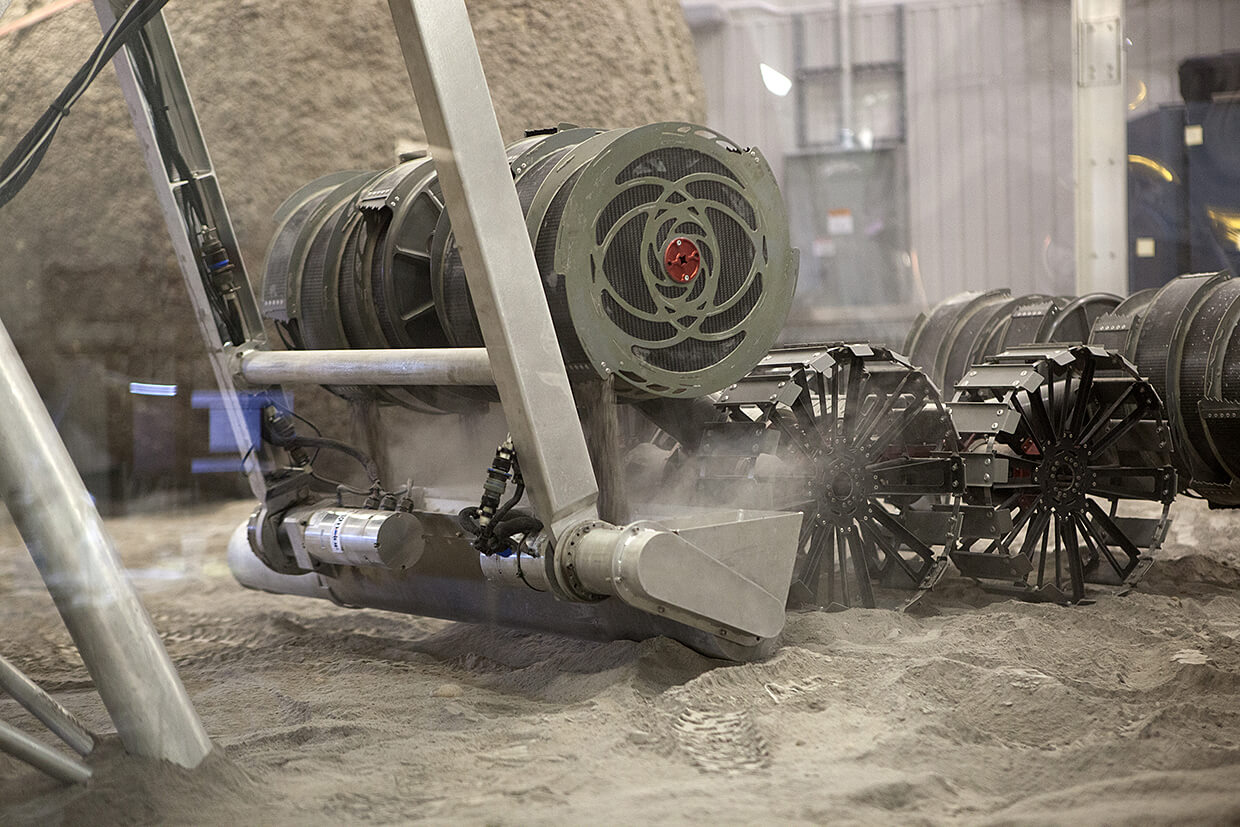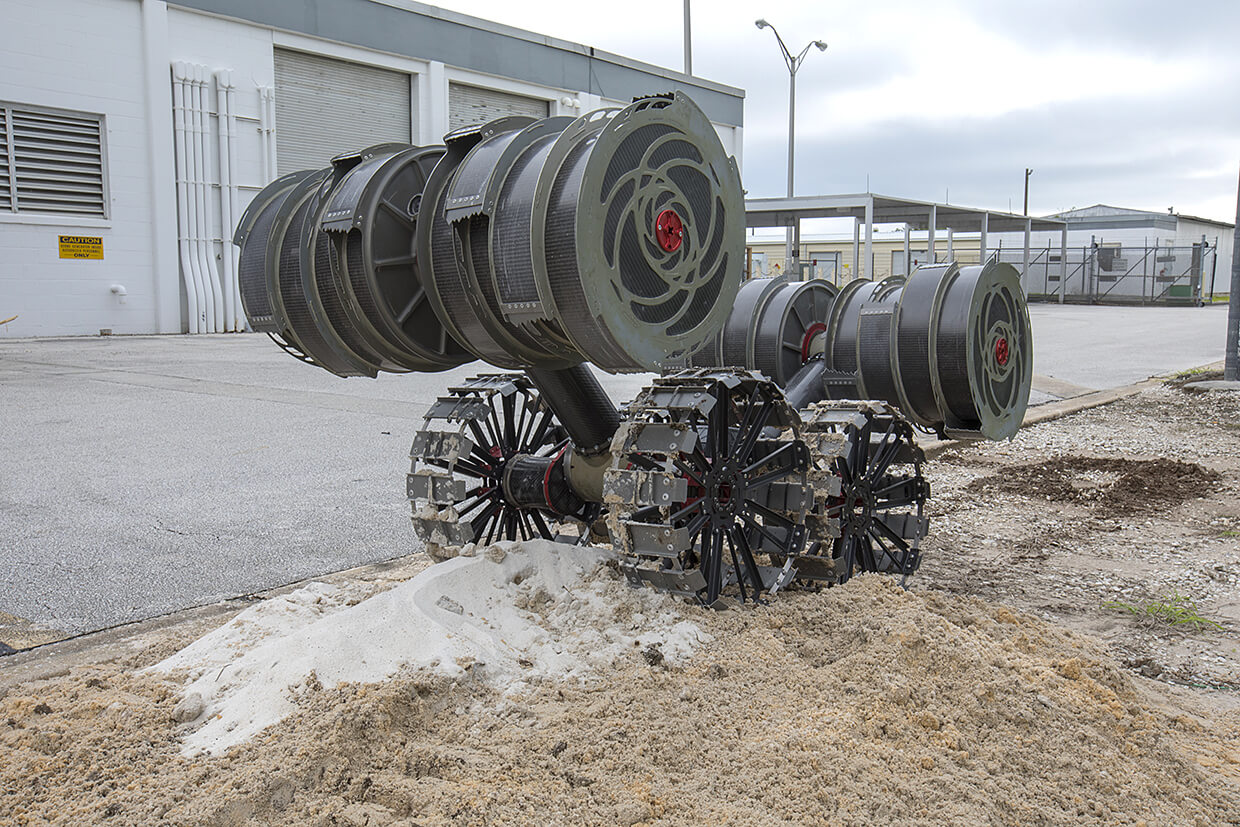Forward-looking: Exploration of the red planet may be possible by humans within the next two decades. New robot miners may help collect dirt that can be turned into water, oxygen, and rocket fuel.
Going to Mars is still in NASA's plans for 2038. One of the main issues being investigated is how exactly it is possible to get a crew to the red planet back home after an extended stay.
To ship anything to Mars, it will take 225kg of fuel to carry a single kilogram of payload. Carrying enough rocket fuel for the return trip would result in a ridiculously large rocket. Instead of strapping huge fuel tanks full of volatile substance to a manned transport vehicle, a team of NASA scientists and engineers looking into synthesizing fuel on Mars.
Not only is the Swamp Works team at the Kennedy Space Center looking to make fuel, there is also a plan to generate oxygen and water. The surface of Mars is full of silicon and oxygen-rich structures that are bonded to metal elements. A prototype robot has been built to dig into the surface of Mars so that usable materials can be extracted.

Since weight is critical, the Regolith Advanced Surface Systems Operations Robot, or simply RASSOR, has been engineered for minimum weight. Bucket drums on opposing sides that rotate in opposite directions allow for forces to cancel out and prevent the robot from tipping during excavation. A shallow trench is created as the robot slowly drives along a path while the collected dirt fills up the drums.
Once the drums are full, RASSOR will drive over to a designated processing area and reverse its drums to dump out its collected material. At the processing stage, an oven will heat the dirt and then collect water via a condensation tube. After going through several filters and deionizing stations, the result is drinkable water.
However, drinking water is only one use. Splitting the water molecules into hydrogen and oxygen components allows for the two to be liquefied and compressed. As key components to liquid rocket fuel, there is plenty of evidence to support the idea that Mars' red dirt can supply enough ingredients to get a crew back home.
There are still many challenges to overcome before the entire system is ready for deployment, but there will be plenty of advantageous advancements made over the next two decades.
